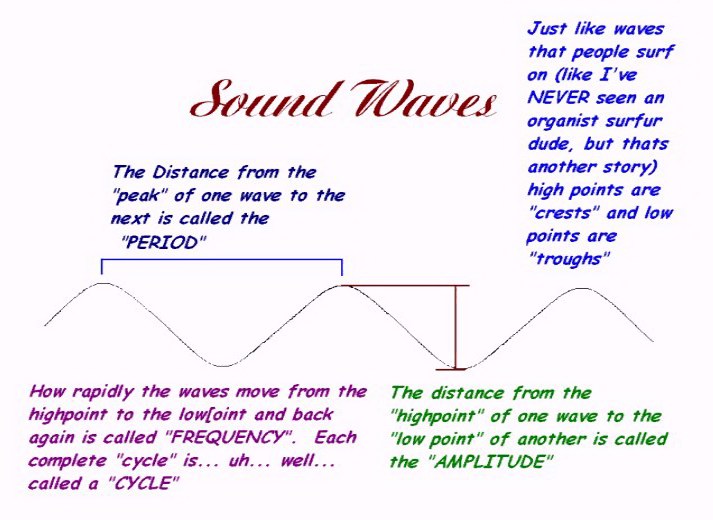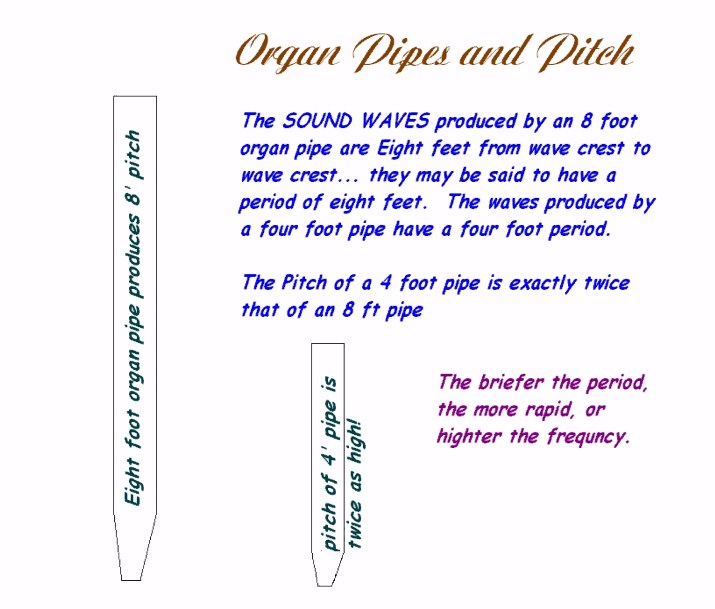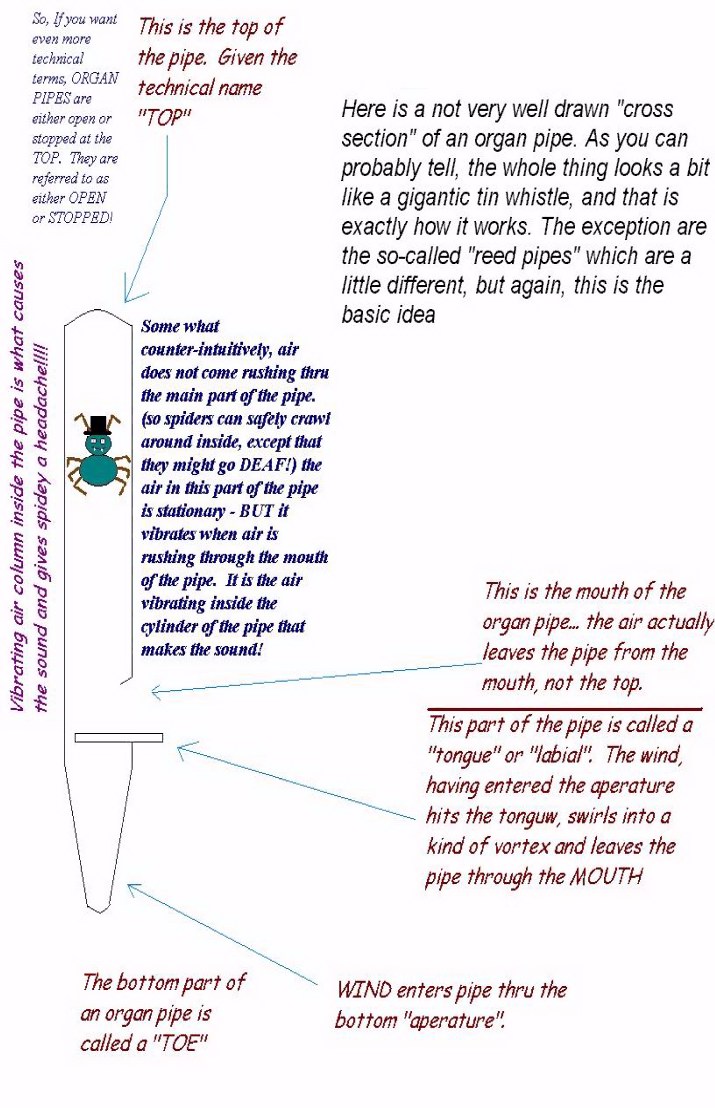The Physics of the Organ /or/
Pipe Organ 101 (sort of) | Our Philosophy of Organ Tuning | The Physics of the Organ | How an Organ is tuned | Harmoniums and Reed Organs | Carillons | Harpsichords
We need to preface this part of the Universal web site by saying that this is the geek page. It could also be the nerd page, depending on your generation. If you're an organist, or know one, you'll understand what we mean... a lot of organists are geeks -- by definition. They went to school for many years to study and develop a craft that is incomprehensible to most other people. They possess and utilize a vocabulary that really constitutes its own language ... that by the way is geek speak for the fact that organists may be caught saying things to one another like, "Well, I wanted to color the tonal palette with the subtle but pungent hues of fifth sounding partials ... do you think I should register the nazard or the sesquelitariat?", to which an appropriate reply might be, "Given the nature of the tessatura, I personally prefer the clarity of the fundamental, and would suggest the employment of a principal stop of eight foot pitch."
Now, lets face it, a lot of organists are not geeks, or nerds, at least not outwardly. They probably took the time to learn all the terms and their meanings, and still manage to say things like, "Totally kewl sound, dude, like which thing-a-ma-giggy did ya pull out to get it?"
So without further preliminary. This page is for geeks. Or for those who would like to be one, or else simply if you find yourself invited to an organist cocktail party and want to make like your with the "in crowd".
~~~~~~~~~~~~~~~~~~~~~~~~~~~~~~~~~~~~~~~~~~~~~~~~~~
All sound is a function of vibration. Specifically we perceive sound when something- some kind of movement sets up vibrations in the air ... what we call SOUND WAVES. When these so called sound waves reach our auditory receptors (nerdy name for EARS) we perceive a sound.
For example, the proverbial tree falls in the woods -- for real- because a camper is there to hear it. Well, this camper can hear this tree fall, because as the tree collides with the ground (or other trees on the way down) the concussion sets up a series of (in this case rather violent) vibrations, which set all kinds of sound waves moving through the air. When those sound waves reach the camper's ears ... he becomes aware that a tree has fallen.
OK ... here's the first of our nerdy facts: Sound travels at over 700 miles an hour. If the tree is just a few hundred feet away, we'll believe that we hear the sound as it hits the ground. If the tree is a mile away, we might not hear anything at all, because there is not enough energy in the sound waves to keep them from becoming dissipated over that distance (geek speak: Not enough AMPLITUDE). But if there were enough energy ... in other words we've got one really loud tree here -- from a mile off you'd see the tree fall first, then a moment later hear the sound. That is because light travels way faster than sound (about 186,300 miles per second).
Now I'll eventually get back to organs.
All musical instruments produce sound by setting up certain very select vibrations that we refer to as pitch or musical tone. Pitch is determined by the number of repetitions of a vibration per second (geek speak: Pitch is determined by the frequency of the sound wave)
For example, if you can manage to create a sound wave that repeats or OSCILLATES 440 times a second, then you have done a fine job of generating "concert A." The more rapid the oscillation, the higher the pitch. The slower the oscillation, the lower the pitch. For example, the lowest A on a piano SHOULD sound at a frequency of 55 vibrations per second. We say should because certain peculiarities about the way a piano needs to be tuned will alter that a little, but, suffice it to say the if you strike the very lowest note on a piano, the string that is set in motion when the hammer hits the string is vibrating around 55 times per second. On the other end of the spectrum, dog whistles (which are often pitched just at, or above the range of human hearing, set up vibrations of 20,000 times per second or more. By the way, the unit of measurement of FREQUENCY OF OSCILLATION is "Hertz" ... abbreviated by Hz. So "concert A" is said to be 440 Hz.
There is logic to all of this. And it's really pretty simple. As you double the frequency, you increase the pitch by one octave. So A above middle A (440 Hz) sounds at a frequency of 880 Hz. A below middle A is 220 Hz. This phenomenon of pitch doubling will be useful in understanding the way organ pipes work (you knew I'd come around to it eventually, didn't you)?
Here is how an organ pipe works.... Reed pipes are the exception. They're weird. OK, they're not really weird, but they work differently than the other kinds (there are four kinds: Principals, Flues, Strings, and Reeds) ... but if you can understand the "basic" kinds (the first three) then you'll have no trouble eventually getting the concept of Reed pipes.
Organ pipes range in size (in a few rare cases) to 64 feet in length. They produce pitches down around the low range of human hearing (about 20 Hz) to tiny pipes not much bigger than tooth picks. Of all the non-electronic sound producing mechanisms, the organ has the largest RANGE... the greatest span of possible sounds between low and high.
|
About Us | The Mandeville Organ | The Morey Organ | The Never Ending Project | The Essex Chapel Project | Anything Can Be Fixed | Products And Services | Links | Contact Us | Guest Book


